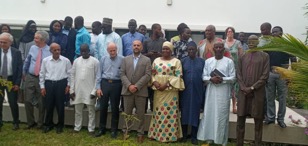
The objective of the technical assistance programme is to promote the development and distribution of renewable electricity systems connected to the grid, to ensure stability, thereby increasing sharing of grid connected to renewable electricity.
At the opening ceremony, Alhagie Manjang, deputy permanent secretary at the Ministry of Petroleum and Energy, recalled that in 2013, The Gambia government with support from the European Union developed the initiative and model for The Gambia.
“However, since the development of this model, there have been numerous bottlenecks including administrative to implement the Tariff and Net Metering Scheme (FITs).”
He explained that primarily, FITs seeks to encourage the adoption of small renewable energy system, making the installation of renewable electricity systems more affordable for owners of the system.”
The FITs, he added, also encouraged electricity consumers to become more energy-efficient, saying some users benefit directly by being credited for electricity they generate beyond their own requirements.
“In addition, FITs promotes the diversification and decentralisation of electricity production. By decentralising the electricity production, it becomes less susceptible to problems such as natural hazards or maintenance issues affecting the operation of a centralised power supplier. Diversification also buffers the electricity market against supply issues that may arise in relation to a particular fuel source.”
He disclosed that in many countries they have proven their ability to stimulate rapid and large-scale renewable energy market development as well as the development of less mature renewable energy technologies and the participation of small and medium scale renewable electricity production.
He also observed that at the utility side, the existence of FITs schemes have the ability to reduce issues of low voltage along the electrical grid by boosting the voltage level especially of those areas at the tail end of the electricity distribution system.





